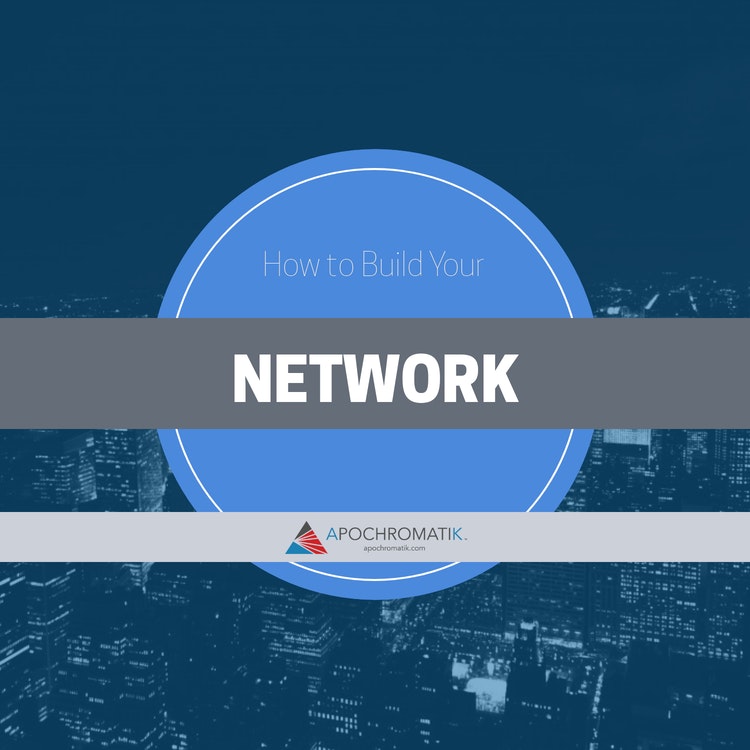How to Build A Network From Scratch in 15 Minutes A Week, Part IV
This week is the fourth and final part of our series on building your network in just 15 minutes per week. By the end of this week, you should be much farther in your effort to cultivate your network, based on just an hour of effort. As a refresher, first we created a list of all of your affiliations, past and present.
Then we narrowed our focus to the affiliations most likely to broaden your network and result in deeper ties, and created a list of 10 people you wanted to contact.
Last week we created a list of your goals in reaching out to each person, and the type of interaction you wanted to have (coffee, lunch, etc.) Then you reached out to 2-3 people.
This week we’ll wrap up with what to do after you’ve met with someone. (If you’d like help on what to do and what to avoid during networking meetings, mark your calendar for Thursday, June 28 at 1:00 p.m. eastern/noon central/11 a.m. mountain/10 a.m. Pacific for a free webinar addressing common networking issues, including what to do and what to avoid during a networking meeting. Join our email list and like us on Facebook to be sure you don’t miss it when registration opens.)
You know that you need to follow up after a networking meeting. But what does that mean? This week, we’ll go through some easy ways to make sure that happens.
First, as you meet with people, keep track of your contact, whether in a spreadsheet, the contacts program on your computer, or some other method. Whatever you do, come up with a system for keeping track so as you move into following up and intentionally cultivating your network, you don’t find yourself wondering who you were talking to about a particular subject. (This system should be in addition to whatever system your employer wants you to use. Yes, it’s less efficient, but you are cultivating your own network and don’t want to be in a position of not having contacts if you aren’t able to take the information if you leave.)
Second, as I wrote about in our piece on three common networking mistakes you can avoid, schedule time into your calendar when you set up a networking meeting or RSVP to attend an event. It doesn’t guarantee that you’ll follow through, but you’re more likely if you have the time set aside to do it.
Third, sit down and do it. If the thought of writing an email or sending a note is overwhelming, come up with a template email or note that you can modify and send. This should definitely not be a form email you cut and paste, and you want it to be polite and professional, but it doesn’t have to be Shakespeare. Just as you thought about your goal for the meeting, think about your goal in following up. You want to thank the person, you want to let them know you appreciate their time, and you want to follow up on anything you promised to do – passing along an article, forwarding a job posting, introducing them to someone, passing along your resume, whatever it is.
In addition to following up with the person directly, you should connect with them on LinkedIn. (Many people think connecting on LinkedIn is enough. It is not, but it is helpful to do in addition to an email or note. )
Fourth, when you send the email or mail the note, the follow up isn’t over. (Remember that this series isn’t about “how to find people to have coffee with once” – the goal is to develop a network that you can cultivate throughout your career.) Schedule it into your calendar then to follow up again, whether in a month or two months or whatever you think will be an appropriate time.
Next, send out an email to another person on your list. You’re on a roll – keep the momentum going.
Finally, pace yourself and celebrate your progress. Some people find that they love networking, and are energized by learning about other people’s careers and industries, and feeling more engaged in their own career. But others find it draining. It will not help you advance in your networking goals if you find yourself so overextended that you’re showing up to networking events or meetings exhausted and coming across as less than the energetic, interesting person you really are. So remember the advice last week about designing interactions that you will actually enjoy, – whether that’s arranging to go to a favorite restaurant for lunch, going to an activity that you enjoy, or just leaving plenty of time so you can walk in feeling focused and calm rather than flustered and scattered.
So that’s all there is to it. Networking does not have to be complicated. Be intentional and organized, reach out to people who can expand your network rather than the people you see all the time, be thoughtful about why you want to reach out to specific people and pick activities that will allow you to deepen your ties, keep track of your contacts, follow up, follow up some more, and keep at it. Without a lot of time, you can build your network, even if you’re sure you don’t have one.
Congratulate yourself on putting time and effort into building your network. If you would like more help – from designing your networking strategy to helping with outreach emails, structuring conversations, or any other career or career transition issue, let us know.
And remember to join our email list and like us on Facebook to hear when registration opens for our free webinar on what to do and what to avoid during networking meetings.
PART I: How to Build A Network From Scratch in 15 Minutes A Week
PART II: How to Build A Network From Scratch in 15 Minutes A Week
PART III: How to Build A Network From Scratch in 15 Minutes A Week
PART IV: How to Build A Network From Scratch in 15 Minutes A Week

